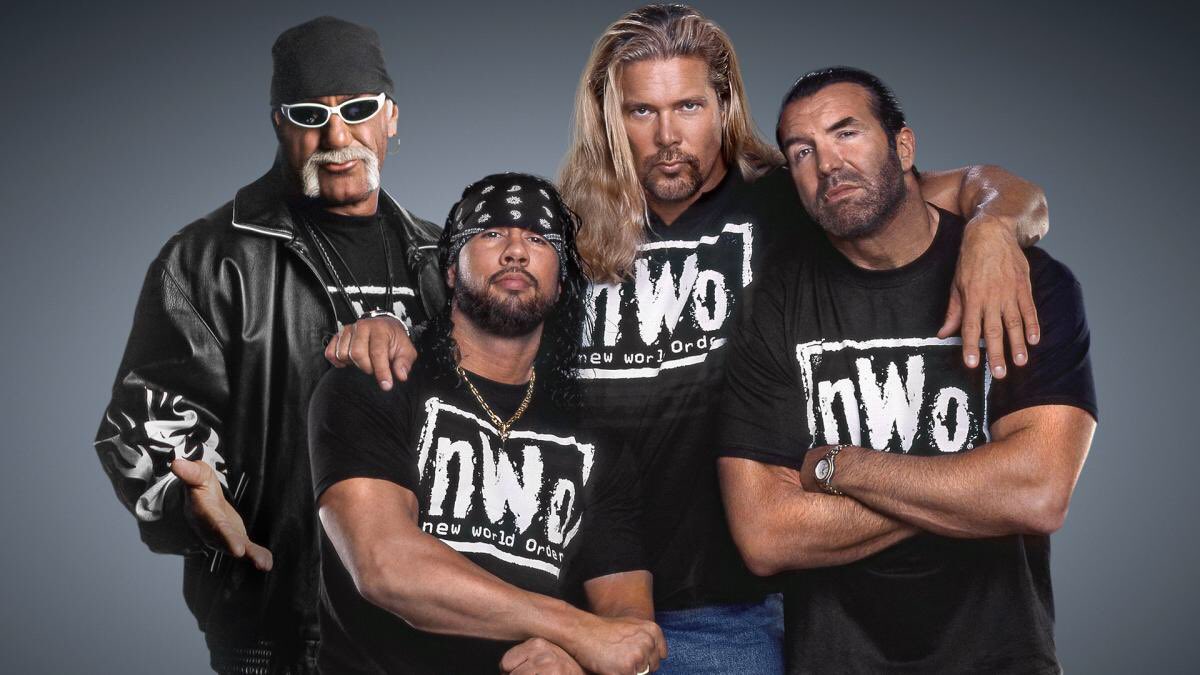
Kevin Nash may be a founding member of the New World Order, but won’t be allowed to wear NWO merchandise at one elementary school.
During his “Kliq This” podcast, Nash recalled a letter from a dad who was told their child couldn’t wear NWO merch as the group was considered a gang. He said,
“It became pop culture-ish, but it wasn’t pop culture. I’ve got a letter on my phone, and it’s from a principal that he sent to a kid, the kid’s father sent it to me. The letter says that, ‘it’s been brought to my attention that your son’s in a gang in school,’ this is like a 5th grader. ‘It’s the nWo, he can no longer wear the colors,’ and on and on and on like that. It’s something like the kids in their nWo shirts are roughing up other kids at recess.”
Nash added that while he is pleased that the group remains relevant, he does not want the NWO or its merchandise to promote any kind of trouble at schools.
You can keep up with all your wrestling news right here on eWrestlingNews.com. Or, you can follow us over on our Twitter and Facebook pages.
Kevin Nash, a professional wrestler and founding member of the New World Order (NWO), recently shared an interesting incident on his podcast. He received a letter from a father whose child was told not to wear NWO merchandise at school because the group was considered a gang.
Nash expressed his surprise at this revelation, stating that while the NWO became popular culture, it was never intended to be associated with gangs. He even read a portion of the letter, which mentioned that the kids wearing NWO shirts were allegedly causing trouble and roughing up other students during recess.
The former wrestler emphasized that he is pleased that the NWO remains relevant even after all these years. However, he also made it clear that he does not want the group or its merchandise to promote any kind of trouble or negative behavior in schools.
This incident raises an important question about the influence of popular culture on children and how it is perceived by school authorities. While it is understandable for schools to have dress codes and policies to maintain discipline and prevent any form of violence or bullying, it is crucial to differentiate between harmless fandom and actual gang-related activities.
The NWO, which was formed in the mid-1990s in the world of professional wrestling, gained immense popularity and became a cultural phenomenon. The group consisted of Kevin Nash, Scott Hall, and Hulk Hogan, who played villainous characters and disrupted the established order in the wrestling industry. Their rebellious attitude and black-and-white NWO merchandise became iconic symbols of their brand.
It is worth noting that professional wrestling is scripted entertainment and not real-life violence. The NWO’s actions were part of a storyline designed to entertain audiences. However, it seems that some school authorities may have misunderstood the nature of the NWO and associated it with real-life gang behavior.
This incident highlights the importance of open communication between schools and parents. It is essential for parents to educate school administrators about popular culture references and clarify any misconceptions. Similarly, schools should strive to understand the interests and passions of their students without jumping to conclusions or making hasty judgments.
In conclusion, Kevin Nash’s experience with a father’s letter regarding the NWO merchandise being considered a gang at an elementary school sheds light on the potential misunderstandings that can arise from popular culture references. While it is crucial for schools to maintain discipline and prevent any form of violence, it is equally important to differentiate between harmless fandom and actual gang-related activities. Open communication between parents and schools can help bridge this gap and ensure a safe and inclusive learning environment for all students.
